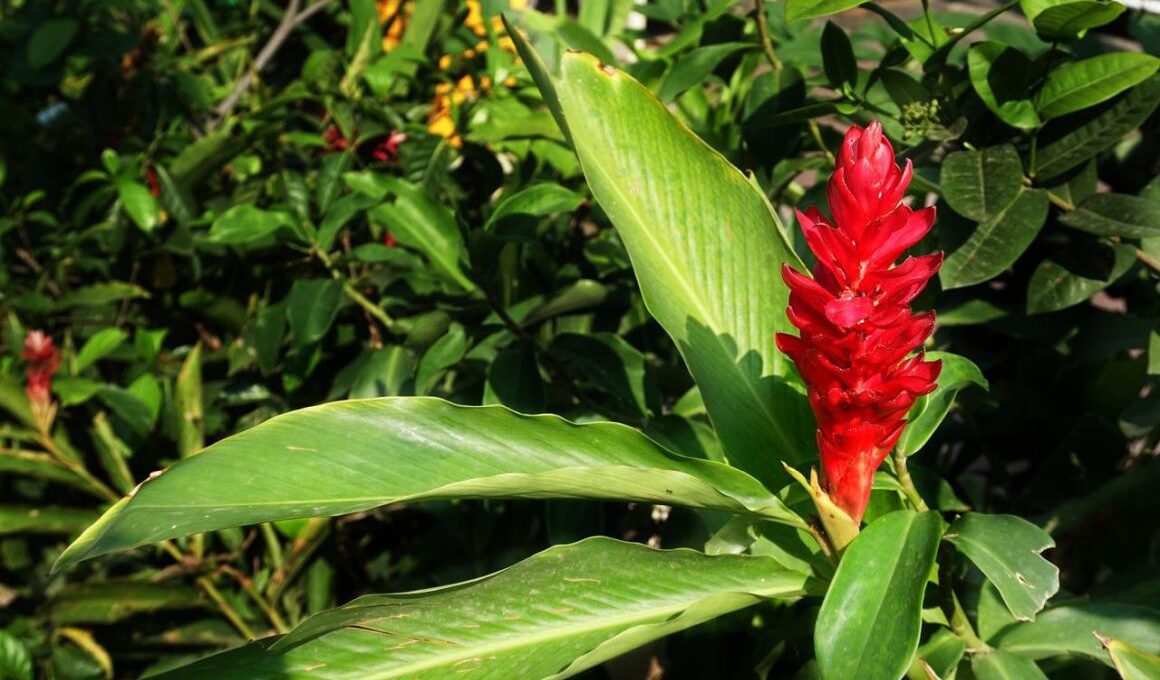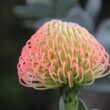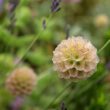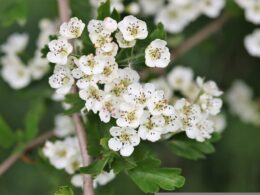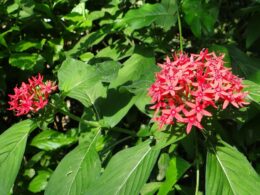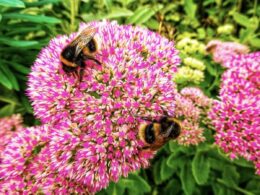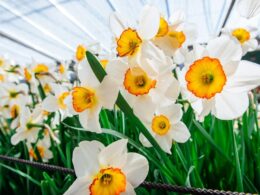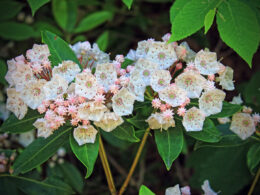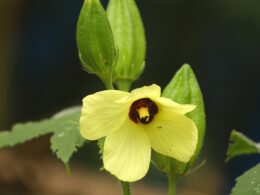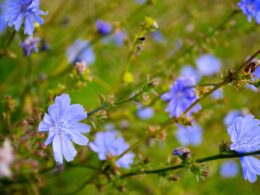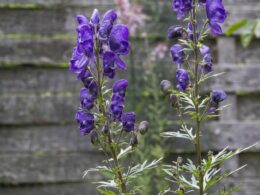There are many types of ornamental plants known as gingers. Each type has its own unique features. In this article, we’ll take a close look at three different flowering ginger plants: the red ginger flower, torch ginger, and wild ginger.
Flowering Ginger Plants of the Zingiberaceae Family
In general, a ginger flower is any flowering plant that belongs to the Zingiberaceae family. These tropical plants are native to Asia, Africa, and the Americas. Gingers grow from rhizomes, and they prefer moist, shady environments. Their leaves are long and narrow with a pointed tip, and their flowers grow in clusters.
The Red Ginger Flower – Alpinia Purpurata
Red ginger flowers, (Alpinia purpurata) are native to Malaysia. The plant gets its name from its beautiful red flowers. It’s also called ostrich plume and pink cone ginger – look up some pictures, and you’ll see why.
These plants grow about 6 feet tall and have long, sword-shaped leaves. They’re commonly grown in Hawaii, Panama, Dominica, Jamaica, Puerto Rico, and many Central American nations. The red ginger is also the national plant of Samoa, where it’s known as teuila.
Torch Ginger – Etlingera Eliator
The torch ginger (Etlingera eliator) is a beautiful plant that’s native to Southeast Asia, where they’re commonly used in flower arrangements called bunga kecombrang. The flower buds are also cooking ingredients in Karonese and Balinese cuisines.
The plant gets its name from its showy pink flowers on long stems that look like torches. It’s also called red ginger lily, torch lily, and wild ginger. It can grow up to 15 feet tall and has large, dark green leaves.
The Canada Wild Ginger – Asarum Canadense
As the name suggests, wild ginger (Asarum canadense) is a plant that typically grows in the wild, in shady areas like forests. It’s commonly found in eastern North America, on U.S. and Canadian territories. Unlike other gingers, Canada wild ginger doesn’t belong to the Zingiberaceae family, so it’s not a true ginger. Besides, it isn’t grown for its flowers, but as an addition to a shade garden.
It’s a low-growing plant with heart-shaped leaves and small brown or maroon flowers occurring at the ground level. Its long rhizomes were used by Native Americans as a seasoning, as they have a similar aroma to that of true ginger (Zingiber officinale). However, this plant is now considered toxic because it has been found to contain carcinogens.
How to Grow Ginger Flowers? Planting and Care
All ginger flowers of the Zingiberaceae family are tropical plants, so they need warm weather and moist soil to thrive. If you live in a cold climate, you can grow them indoors as houseplants. When planting, make sure to choose a spot that’s shady and has well-draining soil.
Water the ginger plant regularly, but don’t overwater it, as this can lead to root rot. Fertilize it once a month with an all-purpose fertilizer. Ginger flowers are relatively low-maintenance, so they make great houseplants for beginner gardeners. To get the most flowers, you should deadhead the spent blooms regularly. To do this, simply cut the stem down to the ground after the flower has wilted.
How to Use Flowering Gingers – Flower Arrangements and More
One of the most popular ways to use ginger flowers is in flower arrangements. For example, red ginger flowers are often used in Hawaiian leis. Torch ginger can be used in a variety of ways, from being added to salads and soups to being used as a decorative element in cocktails.
If you’re looking for a unique way to decorate your home or office, ginger flowers are a great option. You can use them to create a tropical oasis indoors, no matter what the weather is like outside. They look best combined with other tropical plants, such as ferns, palms, and Bromeliads.
Can You Eat Ginger Flowers?
Yes, you can eat certain species of ginger flowers. In fact, they’re often used in Asian cuisine. For example, the unopened flower buds of torch ginger are used as a spice in Karonese and Balinese dishes. They have a slightly sweet taste and can be eaten raw or cooked.
However, most flowering gingers are grown as ornamental plants that don’t have common culinary uses. Before using any ginger flower in a dish, do your research to make sure that it’s safe to eat.
Enjoy the Beauty of Tropical Ginger Flowers
So, there you have it – everything you need to know about ginger flowers. Whether you want to grow them yourself or use them in flower arrangements, they’re sure to add a touch of beauty and elegance to your home or office.
Which ginger flower do you like the best? Let us know in the comments below!





